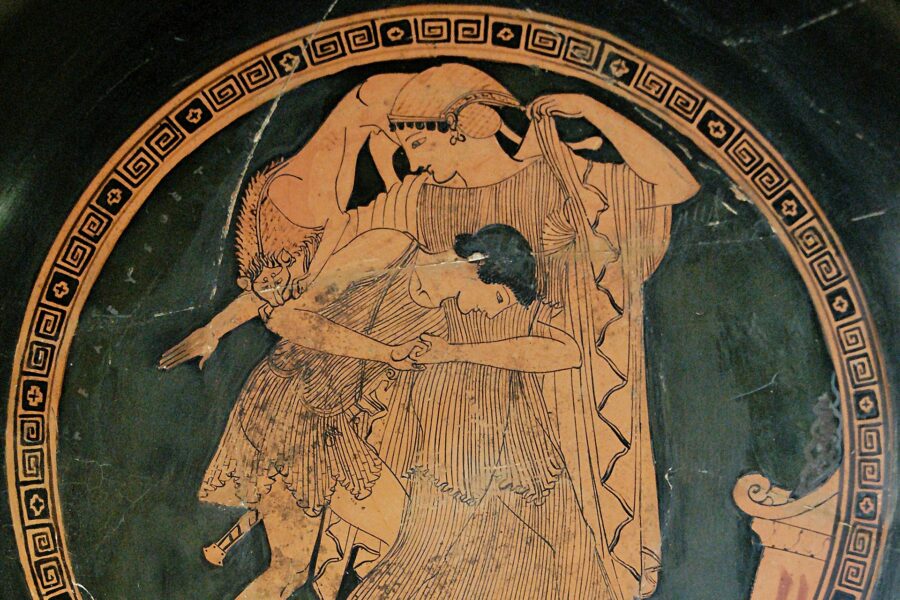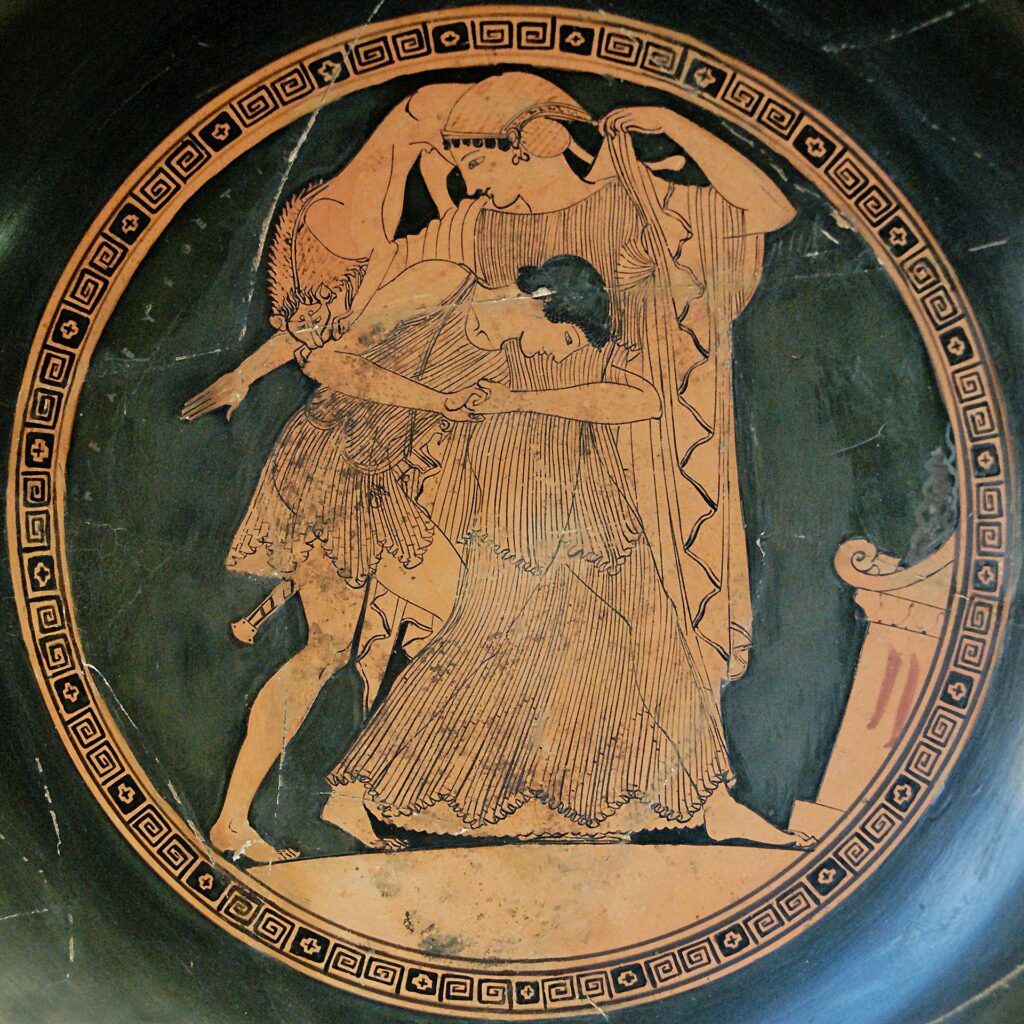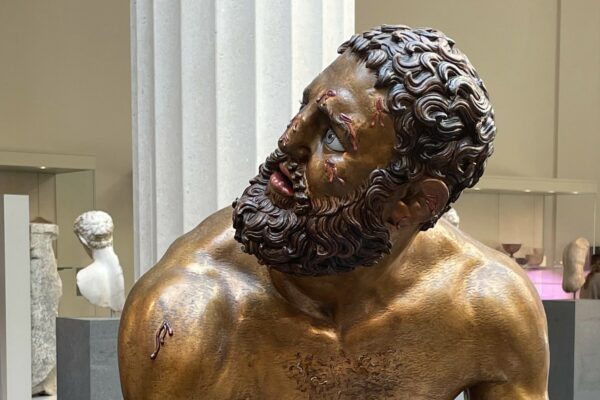
Acquisition no. 4: A museum information sign for a pot by Douris, which involves a little shoulder-lion, for reasons lost to time.
This episode of Honest Museum Signs brought to you by CLAS-C 205 Classical Mythology.
Social media is full of series that feature the greatest works of ancient art. This is not one of those series. This is Honest Museum Signs, a series devoted to the belief that with ancient artifacts, as with everything else, “they can’t all be winners.” Here we plumb the bottom of the ancient barrel to present artistic oops-i-daisies, along with the honest museum information that reflects what archaeologists are really thinking when they analyze these misfires.

And thus Tiger King was born.
This is a pot. It is supposed to show the sea-nymph Thetis being abducted by the hero Peleus. Thetis is way bigger than Peleus, because she is a goddess, and he is a hero that has been chosen to be her future husband specifically for his overwhelming mediocrity. What happened was, Zeus wanted to knock boots with Thetis, because of course he did. But when he did a quick Google check beforehand, he learned there was a prophecy that the son of Thetis would surpass his father. Not content with removing his own hat from the ring, Zeus decided Thetis would have to marry someone deeply meh, to limit the power of said future son. Hence Peleus. Zeus told Peleus where to find Thetis and to hold on to her no matter what animals she shape-shifted into, because more often than not the Greek gods were pervy bastards. This story does explain why the eventual son of Thetis, Achilles, had such rage issues.
The element of a shape-shifting sea-nymph was clearly more than this pot’s artist, Douris, could handle. His solution—give her a tiny shoulder-lion that can bite Peleus—is indisputably ridiculous. So much so, that one has to wonder if Douris had been munching too much on the boiled lead candy some ancients were fond of. Regardless, some Etruscan in Vulci was buried with this pot, and now it’s in the Louvre in France, where people can stare at it and pretend they totally get it.
Photo credit: Jastrow via Wikimedia Commons.
For more exploits of the Greek gods, and how their myths shaped Ancient Greek and modern societies, enroll in CLAS C205 Classical Mythology, coming up in Spring 2023,, and earn GEC credits while you’re at it! Or enroll in in our 1-credit “appetizer” course CLAS B312 Plague, Disasters, and Death in the Ancient World, also coming up in the first-third of Spring 2023, with no pre-reqs, and learn how Peleus and Thetis’ relationship spawned the most notorious war of the ancient world. Can’t get enough of Ancient Greece and Rome? Earn a Classics Minor in just 15 credits!


